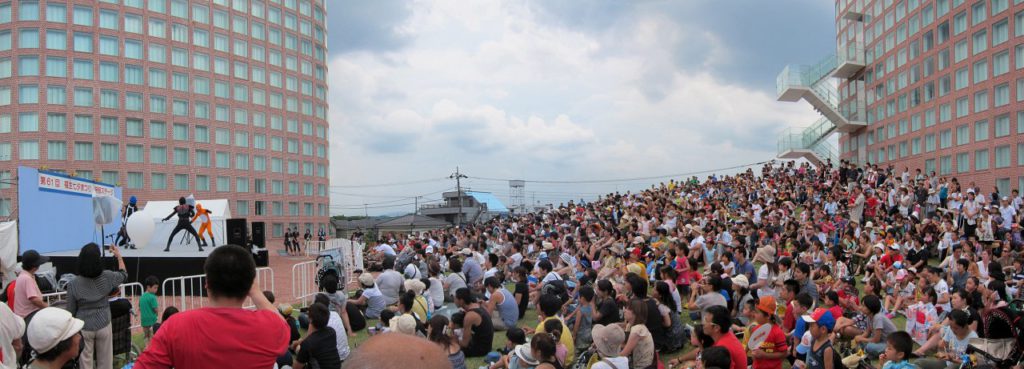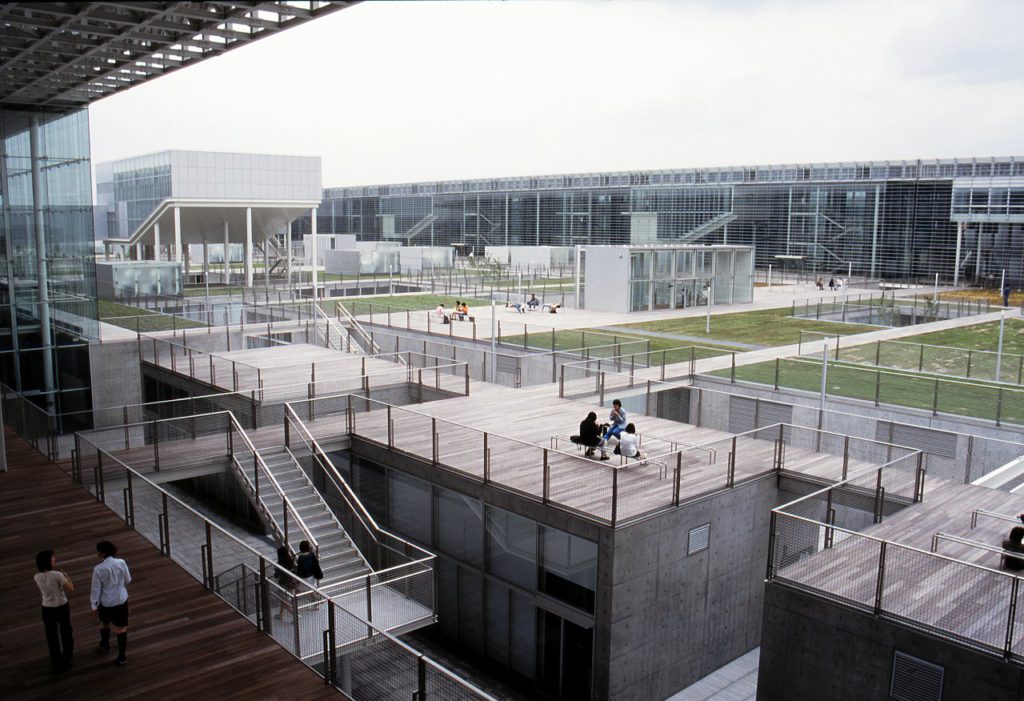Boundaries as spaces: The architecture of Riken Yamamoto, 2024 laureate of the Pritzker Architecture Prize
March 7, 2024
What distinguishes architecture that is made for the private and public realms?
One aspect could be the degree of privacy that is afforded to each user by way of thresholds. But to Riken Yamamoto, who has been bestowed the 2024 Pritzker Architecture Prize, the traditional notions of freedom and privacy should be deconstructed while rejecting the conditions that have reduced housing—especially in urban settings—into mere commodities without relation to one’s neighbours.

“For me, to recognize space is to recognize an entire community,” Yamamoto expressed. “The current architectural approach emphasises privacy, negating the necessity of societal relationships. However, we can still honour the freedom of each individual while living together in architectural space as a republic, fostering harmony across cultures and phases of life.”
Yamamoto’s career has spanned five decades and his projects, ranging from private residences to public housing, elementary schools to university buildings, institutions to civic spaces and city planning. He defines community as a “sense of sharing one space,” believing that members of a community should sustain one another through architecture that could bridge cultures, histories and multi-generational citizens with sensitivity.
ACTIVATING THRESHOLDS
By reconsidering boundary as a space in itself, Yamamoto’s architecture activates the threshold between public and private lives, achieving social value with places for engagement and chance encounters.
Here are his key design strategies to blur the boundaries between private and public realms in order to create kinship between the two.
⠀
Transparency
See-through materials, porous walls, etc. may be utilised so that users inside spaces may experience the environment that lies beyond, while people passing by may feel a sense of belonging.
This is a strategy that Yamamoto has used for civic buildings, which achieve specific functions as well as affirm public purpose and assurance. For example, the Hiroshima Nishi Fire Station (Hiroshima, Japan, 2000), appears entirely transparent, with a glass louvered façade and interior glass walls. Visitors and passersby may view through to the central atrium to witness the daily activity and training of firefighters, and are encouraged to grow acquainted with the civil servants in the many designated public areas of the building.
Saitama Prefectural University (Koshigaya, Japan 1999), specializing in nursing and health sciences, is composed of nine buildings connected by terraces that transition into walkways leading to transparent volumes that allow views from one classroom to another, but also from one building to the next, encouraging interdisciplinary learning.
Such fellowship is fostered even within the youngest generations at Koyasu Elementary School (Yokohama, Japan 2018), which features generous, undivided terraces extending learning spaces, permitting sights into and from each classroom, and encouraging relationships amongst students across grades levels.




Embodying relations
Yamamoto has evolved influences from traditional Japanese machiya and Greek oikos housing that existed in relationship to cities, when connectivity and commerce were essential to the livelihoods of families.
He designed his own home, GAZEBO (Yokohama, Japan 1986) to invoke interaction with neighbours from terraces and rooftops. Ishii House (Kawasaki, Japan 1978), built for two artists, features a pavilion-like room that extends outdoors and serves as a stage to host performances, while living quarters are embedded beneath.
His larger housing projects further assure that even residents who live alone don’t dwell in isolation: Pangyo Housing (Seongnam, Republic of Korea 2010), a complex of nine low-rise housing blocks is designed with nonprescriptive transparent ground floor volumes that catalyse interaction between neighbours. A communal deck across the second floor features spaces for gathering, playgrounds, gardens and bridges that connect one housing block to another.
Continuity of landscape
Yamamoto’s designs do not stand apart, but rather ‘communicates’ with existing natural and built environments that contextualise the experience of each building.
For example, Fussa City Hall (Tokyo, Japan 2008) is conceived as two mid-rise towers, rather than one high-rise to compliment the surrounding neighbourhood of low-rise buildings. Concave bases invite visitors to recline and rest, while green public rooftop and lower levels are designated for flexible public programming.
THE CIRCLE at Zürich Airport (Switzerland, 2020) is conceived as “neither a nineteenth-century city nor a twentieth-century city intended for rational and economic ends but an entirely new city for the new lifestyles of the twenty-first century”, recreating the structure of a medieval city with new construction methods and a landscape-oriented design.
He considers the user experience first, designing Yokosuka Museum of Art (Yokosuka, Japan 2006) as both a destination for travellers and a daily reprieve for locals. While the inviting serpentine entrance evokes the surrounding Tokyo Bay and nearby mountains, many of the galleries are underground, providing those who approach with an undisturbed visual experience of the natural geography. Visitors may view through to the landscape and other galleries from round cutouts in all common spaces, uniting these otherwise distinctive environments so that those inside are impressed upon not only by the artwork, but by the activity of others in the spaces alongside them.


A SHARED DIMENSION

The 2024 Pritzker Architecture Prize jury members, chaired by Alejandro Aravena, commended how the architecture serves as “both as background and foreground to everyday life … Yamamoto suggests rather than imposes this shared dimension through understated, yet precise architectural interventions. By including spaces for common activities within, in addition to and even regardless of the main function of his buildings, he allows these to integrate into the quotidian life of the community, instead of being only experienced in exceptional circumstances.”
Yamamoto is the 53rd laureate of the prize and the ninth to hail from Japan. He will be honoured in Chicago, Illinois, United States of America this spring and the 2024 Laureate Lecture will be held at S. R. Crown Hall, Illinois Institute of Technology on May 16th, open to the public in-person and online.
Do you have projects that make use of In-between Spaces? Submit it to FuturArc for our 2nd Quarter 2024 issue!
To read the complete article, get your hardcopy at our online shop/newsstands/major bookstores; subscribe to FuturArc or download the FuturArc App to read the issues.
Previously Published Online Exclusive Feature
Contact us at https://www.futurarc.com/contact-us for older commentaries.



